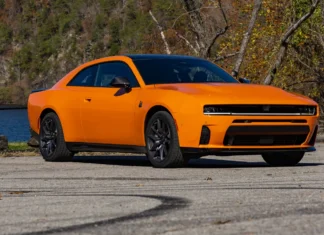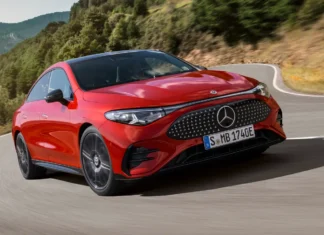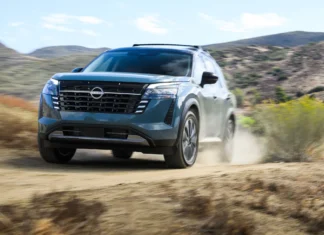The grip of winter is upon us, and road safety is a very important consideration for all of us. So here is the question. If you live in the snow belt or places that consistently see temperatures below 37F, should you spend the extra money for a dedicated set of winter tires? Or should you keep the all-seasons on your vehicle year-round? Of course, each person’s case is different, but this video will make you think.
Naturally, we can assume that you will NOT use summer performance tires on the snow. Don’t even think about it. These tires are meant for high performance driving in dry or slightly wet conditions and at warm temperatures. They use harder rubber compounds. These tires become stiff when temperature drops. Basically, they turn into sleds on snow and ice. A car on summer tires may actually get going on snow, but it will not stop. The best of anti-lock braking systems will not help. I experienced this myself. The car will keep sliding and sliding until you hit some obstacle.
Stopping is more important than acceleration in the worst of conditions. Just because your car has a sophisticated all-wheel-drive system, does not mean it can stop well. You need to have grippy tires.
All-season tires can be acceptable in “all” seasons, but this video shows that even the best and latest all-season tires cannot match the added safety and control of a dedicated winter tire, like the Blizzak.
Why focus on Blizzak? It’s because this test was setup by Bridgestone (makers of popular Blizzak tires) in collaboration with TireRack.com, who sell all kinds of tires and wheels. Only Bridgestone tires were used during this test, but other reputable tire manufacturers have a great selection of dedicated winter tires.
All-season tires are made to have acceptable level of performance and longevity over a very wide temperate range and surface conditions. They are the “jack of all trades”. On the other hand, winter tires are snow and ice specialists. They use a combination of intricate tread pattern and special rubber compound to grip the ice and go through snow and slush. Notice the tiny zig-zag lines (sipes) in the image above. Each sipe provides a leading edge to aid with grip. The tread pattern is designed to channel away the water. Water? You may not realize, but the friction heat generated by the vehicle actually melts the ice and snow at the point of contact even at extremely low temperatures far below freezing. So the tire is aquaplaning on ice. The tread and the tire compound are designed to channel away or trap the excess water and allow the sipes and microscopic stud particles to grip.
Yep, the Blizzak tire compound contains microscopic studs or “bite” particles and hydrophilic cells. Hydrophilic means that the molecular structure of the compound attracts water and traps it, as to make the tire contact patch as dry as possible. How is this possible? This is a patented and highly guarded trade secret.
Bottom line is – winter tires are meant to grip ice. Emme Hall saw a speed differential of more than 2 mph and stopping distance difference of over 23 feet! The Blizzak tire stopped 23 feet shorter than an all-season tire from 12 mph on Colorado Avalanche home ice at the Pepsi Center.
You are surely concerned about the cost for an additional set of tires. Here is a tip. It’s can be cheaper for you to buy a set of winter tires for a smaller diameter rims. So, if you do have a BMW 328i with 18 or 19 inch rims and all-season tires. You can save money if you bought cheaper 17 inch wheels (perhaps steel rims) and winter tires, over buying a lower profile winter tire for your current 19 inch rims.
By the way, there is an added benefit of getting a taller side-wall winter tire. The compound is softer and the ride is noticeably better.
Bridgestone experts say that Blizzak tires can last three or four winter seasons if you do not use them year-round. You don’t want to use winter tires in the heat of the summer, as they will wear out very quickly. Also, after about 50% of the tread depth is gone, most of the magic Blizzak compound is also gone. What’s left is a harder all-season type of compound underneath. So, if your Blizzak is half worn, it turns itself into an all-season tire that you can run in the summer. Handy!
Andre Smirnov is a life-long automotive enthusiast, writer, reporter, and software engineer. He has been a contributor at TFL since 2011.






















